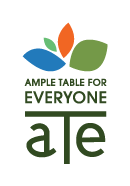Despite free summer meals programs in NYC, many children are still hungry.
With summer approaching, thoughts turn to fun-in-the-sun and best of all no school! But for far too many NYC children this translates to empty bellies and worry about when and what they’re eating next. Sadly, the time of year that should bring relaxation, joy and play is instead to many US children (about 4 million according to No Kid Hungry (NKH)) a time of increased food insecurity. And while there are programs in place to help address this issue, NKH estimates 6 out of 7 hungry kids still don’t get the summer meals they need.
So, what’s being done to feed school-age kids during summer months?
- There is a federally funded, state administered program to help address this concern called the Summer Food Service Program (SFSP) whose mission is to provide low income children 18 and under with free breakfast and lunch daily. In NYC, this service is available from 6/27-8/30 and food can be accessed at 1200 sites across the city including schools, community school centers, libraries and other locations. And similar to the “free lunch for all” approach during the school year, any child 18 and under can get food without registration, documentation or ID. Still there appears to be access issues. leading individual states to experiment with different approaches, including NYC’s testing of four food trucks in 2018.
- The Department of Education’s summer meals program site offers complete information on summer meals and food programs in NYC. To find programs outside of NYC, NKH in collaboration with the USDA has established a text service in English and Spanish where a user just texts FOOD or COMIDA to 877-877 and then the user inputs their zip code and information on three nearby summer meal service programs is provided. Over 1,000,000 families have used this service for summer meals since it was established in 2016. However, their data for New York City programs specifically seems to be extremely limited.
- Another innovation being tested in several states is Summer Electronic Benefit to Children (SEBTC) which transfers government food dollars to a payment card so families can shop for their own food, increasing the access and convenience. Launched in 2011 and available in seven states as of 2017, including well as the Cherokee and Chickasaw Nations, the program has reached 240,000 families with a reported increase of 20 percent over the previous year. As of now, NY state is not part of this summer food program.
And still, there’s a hefty gap of kids going hungry during the summer. But, why?
In an attempt to determine the effectiveness of free summer lunch programs designed to address summer hunger, the Food Research and Action Center (FRAC) analyzed the effectiveness of lunch programs by state for 2017. NY State came in third reaching 30.4 out of 100 students qualified for free or reduced lunch. Consider that stat for a minute: In NY State 70 out of 100 children in need are NOT being reached by summer meal programs– and yet, we are number 3 in the country. In fact, NKH estimates that only 15% of children nationwide who need help are reached by summer meals programs, leaving the majority of our at-risk children underserved and hungry. This deprivation, which the FRAC report calls the summer nutrition gap, also puts undernourished kids at greater risk for learning loss over the summer resulting in the potential for diminishing skills and knowledge versus their better nourished peers.
So what can be done?
Convenience and access seem to be the key barriers to helping families take advantage of the available food programs. But it is hard to get the food and information to eligible families once the children are dispersed for the summer. Funding is another barrier– a classic chicken-egg scenario especially in NYC. For example, the federal funding for the NYC Summer Nutrition Program is based on an assumed ratio of 40 participants per 100 school year National School Lunch Program participants. If NY state could reach that number (versus its current 30.4) they could receive additional funding of $8.5 million and serve an additional 113,798 meals during the summer. But reaching the incremental gap to earn the funding takes more funding–and therein lies the challenge. But it is now June and soon our most vulnerable citizens will again be out of school, free from homework but hardly free from worry. What can we collectively do?
- Share this post with schools, organizations and individuals who are working with or helping families who may need these summer meal services (via Twitter or Facebook).
- Visit the Department of Education’s summer meals program for information on summer meals and food programs in NYC.
- As always, donating healthy food to local shelters and food banks helps.
- Share your ideas as comments to this blog post about ways to improve the information distribution, access and convenience issues this vital service currently has.
In a city and country as wealthy as ours, no child should need to wonder when or if there will be lunch for them to eat. We can and we must do better. Every child must be able to say, “I ATE”.

